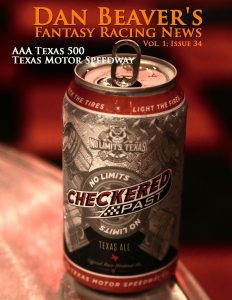One of the solo cookies—Atlanta Motor Speedway—was on the schedule last week. The paucity of data from the single race in Nevada is offset somewhat by the juxtaposition of the Kobalt 400 with the Folds of Honor QuikTrip 500.
Drivers can gain some momentum at this stage of the schedule. In a couple of weeks, they will visit the two-mile Auto Club Speedway. A couple of weeks after that, they will be on another “cookie-cutter” course: Texas Motor Speedway. Four of the first seven races of the season are on similarly-configured, 1.5- and two-mile tracks.
Last year, six drivers who scored top-10s at Atlanta, backed that up with another top-10 at Vegas. Jimmie Johnson and Kyle Busch led the charge in 2016 with a pair of top-fives. Joey Logano, Austin Dillon, and Ricky Stenhouse Jr. came close to adding their name to the top-10 sweepers with a worst result of 12th in the two races.
Several of those drivers ran well again last week. Notably, Johnson and Busch did not and it will be interesting to see if the dark horses who stepped into their place in the QuikTrip 500 can also unseat them in this week’s contest.
The “cookie-cutter” promotors hate that description of their tracks. And to be fair, no two courses are alike. From their point of view, they have a right to bristle. Fantasy players have a different outlook and should find cookies quite tasty.
Or head to the Previews Page to download if you have already subscribed.




